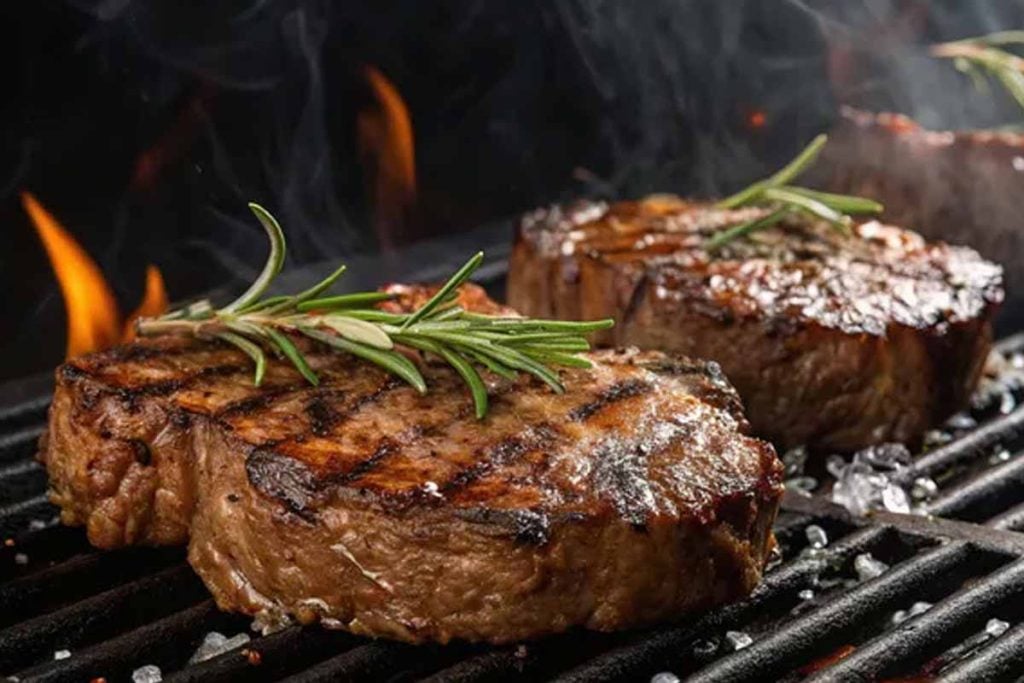Sizzle speaks for itself when meat meets heat, yet timing turns nerves into confidence. With the 3-3-2-2 method, home cooks lock flavor fast and avoid guesswork. From pan to grill, the steps stay clear, and the results please. A single plan steadies your hand and rewards patience. Confidence follows clear steps. Tonight, your steak can taste like it came from a pro, because the method is simple, repeatable, and built for juicy results.
What the 3-3-2-2 method means for steak at home
Heat a cast-iron pan on medium with 2 tablespoons of oil, or preheat your grill to about 335°F. Pat meat dry, then let it hit hot metal without crowding. Place the cut down and let it sit for 3 minutes. No nudging, no pressing, no peeking while crust begins.
Flip once, cook another 3 minutes, and still resist the urge to move it. Turn again for 2 minutes, then one last time for 2 minutes. This pattern gives both sides balanced exposure. The surface browns, while the center climbs toward target doneness without overshooting or drying.
After the final sear, remove heat and rest for 5 minutes. Juices settle back through the fibers, so each slice stays moist. Slice against the grain for tenderness. Serve right away while the exterior remains crisp and inviting. This rhythm steadies pace and keeps steak stress low.
Heat setup and timing that set you up for success
Dry surfaces brown; damp ones steam. Because of that, blot before cooking, then preheat until the oil shimmers. Cast-iron stores energy and evens contact, while grill grates deliver smoky marks. Either path works when you honor the clock and avoid fussing through the critical first minutes of searing.
During each 3-minute block, you trigger the first deep browning. Because the pan stays medium and the grill near 335°F, sugars and amino compounds react rather than burn. Gentle but steady heat reaches inward, so the exterior builds color as the interior warms evenly and holds moisture.
The final 2-minute passes finish the crust. Pull the meat, rest 5 minutes, then check temperature with a thermometer. Medium-rare aims for 130°F, medium for 140°F, and medium-well for 150°F. Sticking to those numbers keeps steak safe, juicy, and still vividly pink where you want it.
Why steak browns, crisps, and stays tender with this timing
The Maillard reaction drives that coveted crust. It happens as proteins meet reducing sugars between about 280°F and 330°F. Stay in that zone, and flavors bloom with toasty notes. Push beyond it, and sugars caramelize or char. Timing helps you hold the sweet spot without scorching.
Three steady minutes per side spreads heat across the surface. Because the meat isn’t jostled, juices don’t leak and fibers relax. That even exposure protects tenderness and prevents the dry chew that comes from overshooting. The follow-up 2-minute sears add snap without pushing the center too far.
Overcooking remains the common pitfall. It turns muscle tough, dries texture, and makes bites feel heavy. With a thermometer, you stop at your mark instead of guessing. Pair that with a brief rest, and the fibers reabsorb moisture. The result tastes balanced, and steak eats clean and satisfying.
Temperatures, thickness, and doneness targets you should track
This schedule shines with ½- to 1-inch cuts. That thickness allows heat to reach the center while the surface browns on time. Go thinner, and watch closely; edges can overcook fast. Go thicker, and monitor the thermometer, because the center lags and needs patience to reach your finish.
Whether you use a skillet or a grill, consistency wins. Keep the stovetop at medium, and maintain grill heat near 335°F. Because cast-iron holds energy, recovery between flips stays quick. On grates, close the lid between turns so heat surrounds the meat and the temperature keeps rising cleanly.
Doneness still depends on numbers, not color alone. After resting five minutes, measure at the center and trust the reading. Medium-rare equals 130°F; medium equals 140°F; medium-well equals 150°F. Those benchmarks align with comfort and texture, and they keep steak flavorful rather than dried out.
Adaptations, mistakes to avoid, and recipe ideas that fit
Choose a neutral, high-heat oil for the pan step. Two tablespoons coat evenly and resist smoking while you sear. Avoid constant flipping, poking, or pressing; those habits spill juices and cool the surface. Keep tongs ready, and space pieces out. Crowding kills heat and compromises browning and texture.
Season salt forward, then pepper, and add rubs when you want a bolder crust. Coffee rubs sing with this pattern, as do buttery bastes near the end. For a big rib-eye on the grill, follow the cadence, then rest well. Tracking temperature keeps the payoff sure and the chew plush.
This approach plays nicely with sides and sauces. While the meat rests, whisk pan drippings with stock for a quick glaze. Or let the smoky fat gloss grilled vegetables. Because timing stays simple, you watch guests, not the clock. Dinner lands hot, and steak shares the spotlight without stress.
A simple schedule that brings repeatable restaurant results at home
The 3-3-2-2 pattern proves reliable because it balances heat, time, and restraint. You build crust first, then finish gently, and finally rest. A thermometer confirms doneness without guesswork, so confidence grows with each attempt. With modest gear and a clear plan, weeknights feel capable and satisfying. And when you crave a celebration, steak delivers rich flavor on demand, while your process stays calm, repeatable, and fun to share at the table.
